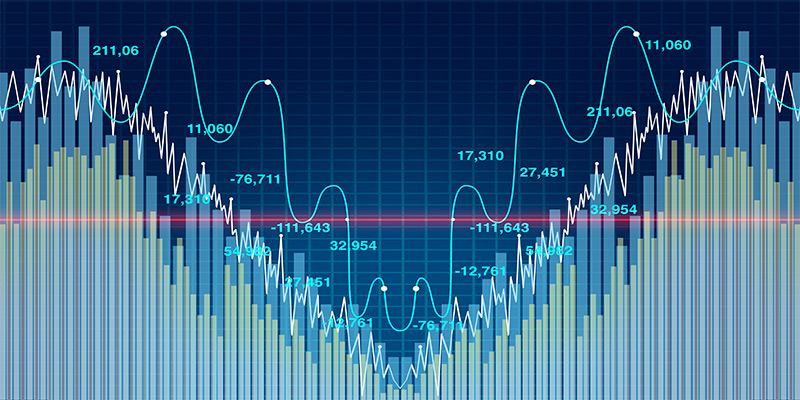2 months.
That’s how long the “COVID recession” lasted—according to newly released data from the National Bureau of Economic Research.
It started in February 2020... and was over by April. Making it by far the shortest recession in US history.
This also confirms the recession ended 16 months ago... which will surely surprise a lot of folks.
If you were to judge solely by the constant stream of scary news from major media, you might assume we’re still in a recession today.
Of course, RiskHedge readers know better.
From the earliest days of COVID, Chief Analyst Stephen McBride was telling anyone who’d listen that something special was happening in America. In short, businesses were changing, innovating, and transforming at speeds we’ve never seen before to meet the new challenges presented by a pandemic.
As Stephen showed us, many Americans didn’t sit home and wait for the government to take care of them. Instead, they adapted and got to work. The numbers show that, during the shutdowns, Americans started their own businesses at the fastest rate EVER.
Here’s Stephen:
Americans have a “get up and go” attitude that I’ve yet to find anywhere else in the world. Just look at how they’ve responded during the biggest crisis of our lifetimes… And what happened to a batch of American stocks.
Americans couldn’t go to the office… so they worked on Zoom (ZM), which shot up 388% in 2020.
They couldn’t go to college campuses anymore… so they continued getting their educations online. 2U (TWOU)—which runs online classes for 73 of the world’s best colleges—saw its stock double last summer.
They couldn’t open up physical stores… so they started selling stuff online on Etsy (ETSY), which finished 2020 as the year’s second-highest-performing stock in the S&P 500.
Today, we’ll look at two key lessons from the shortest recession in history. Both will help you be a much, much better investor than the average American. And the first will answer a question that might be on your mind...
-
“Why am I just hearing about this now?”
As I mentioned, the recession ended almost a year and a half ago.
So why did CNBC just publish this headline 2 weeks ago?

In short, the major media is always way, way, behind the curve.
So you should NEVER follow headlines to inform your investing decisions.
Now, to be fair… it’s not always their fault. They’re simply reporting on the numbers once they’re made “official.” It typically takes many months—in this case over a year—for government economists to gather data and perform calculations.
Look at this NBC headline from last year: “It’s official, the US entered a recession in February...”

It was published June 2020.
Gee, thanks for letting us know. The recession was already over for 3 months!
And the stock market had bottomed 3 months prior!
It would go on to double from its COVID lows.
I’m sure you can see why using this stale “information” to guide your investment decisions will cost you a fortune.
Of course, if you’re a Disruption Investor subscriber...
-
You know how dangerous it is to take headlines seriously.
Here’s what Stephen said in his April 2020 premium Disruption Investor issue—during the “darkest days” of COVID, while the stock market was in the midst of a 30%+ plunge...
The truth is… markets ALWAYS bottom when the news is still terrible. This is why you must resist making investment decisions based on today’s headlines.
Long before coronavirus disappears from the news… way ahead of the US economy picking up… and before anyone declares we’re in a “new bull market”… stocks will start rising.
Stocks almost always lead the news.
He then laid out his blueprint for the months ahead. Stephen again:
I’ll be frank... I don’t know if we’ve seen the bottom in stocks yet.
But here’s the important thing: I believe markets are closer to bottoming than most people think.
My research suggests we’re closer to the bottom than the top. And if stocks haven’t hit the bottom yet, they’re at least in the vicinity. And now’s the time to prepare for what’s next.
With the benefit of hindsight, we now know that the market had bottomed roughly 2 weeks before Stephen wrote that. In the issue, he urged readers to begin accumulating shares in world-class disruptive businesses like Mastercard (MA) and Visa (V).
Readers who ignored the headlines and followed Stephen’s guidance were handsomely rewarded.
Within 6 months, eight stocks in his portfolio were up over an average of 65%, far outpacing the S&P.
Certain individual picks soared much higher, including: PayPal (PYPL), up 125% in 5 months... and Albemarle (ALB), up 82%.
-
Here’s the second big lesson from the shortest recession ever…
In our experience talking to thousands of individual investors, we hear this all the time:
“I’ll wait for the next recession to buy stocks at bargain-bin prices”…
This is a logical thought... but it rarely works in practice. Because in all likelihood, you’ll be waiting a long, long time...
Recessions occur every 4 years and 2 months, on average. That’s according to data from the National Bureau of Economic Research going back 90 years.
And in modern times, recessions occur even less often. Before COVID, we hadn’t experienced one in a record 10+ years.
So, if you’re waiting for the next recession to “get invested,” you’ll likely be waiting until 2026–2031.
Now, I’m not suggesting you put all your money in the stock market tomorrow. I realize US markets are at all-time highs, and it’s an uneasy feeling to buy stocks when they’re so “expensive.”
So, if you’re looking to get invested in a lower-risk way, here’s an option you may not have considered:
-
Try “dollar-cost averaging.”
With this stock buying technique, you place a fixed dollar amount into an investment on a regular basis.
Say you plan to invest $10,000 in one stock, or in the whole market.
Instead of buying $10,000 in one go, you’d split it up into four chunks of $2,500 over four months.
You’d be “scaling in” slowly as opposed to “going all in” from the beginning.
By investing this way, short-term dips in the market work to your advantage. They’ll allow you to pay a lower average price while you ease into your investments.
Stephen currently uses dollar-cost averaging on a handful of stocks in his Disruption Investor portfolio. It’s a smart way to get invested while controlling risk.
Chris Reilly
Executive Editor, RiskHedge
P.S. What disruptive trends would you like to hear more about in the coming weeks? Let me know at chrisreilly@riskhedge.com.




